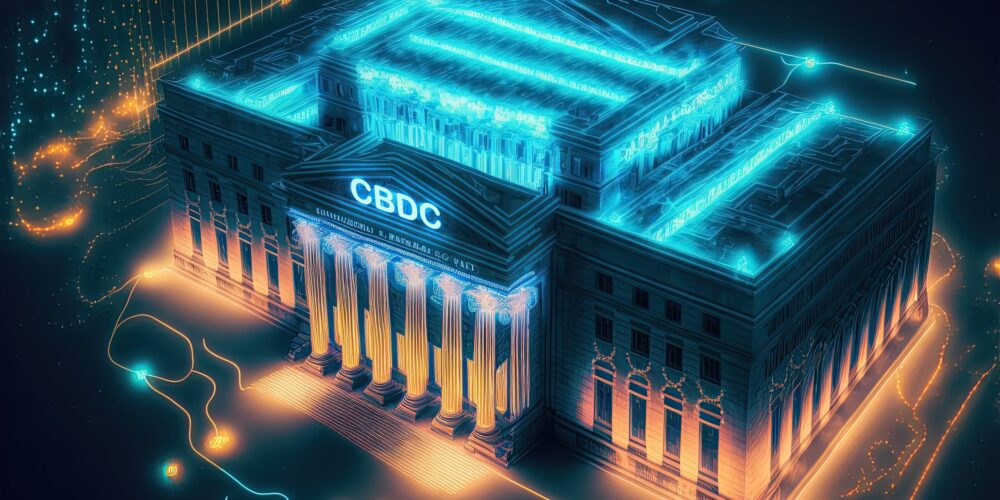Diverging approaches to cryptocurrency regulation between the U.S. Senate and House have created legislative gridlock, delaying key bills and threatening America’s competitive position in digital asset innovation. With critical frameworks still in limbo, stakeholders are left wondering what the future holds for the burgeoning crypto market.
House Legislative Actions Spark Ambitions
In a significant move, the House recently passed the Digital Asset Market Clarity Act of 2025, or the CLARITY Act, emphasizing bipartisan support to provide a comprehensive regulatory outline for the cryptocurrency industry. This act aims to clearly delineate the roles of the Securities and Exchange Commission (SEC) and the Commodity Futures Trading Commission (CFTC) in regulating digital assets. Furthermore, it introduces a provisional registration system for digital commodity brokers and exchanges, designed to foster innovation while ensuring consumer protection.
Additionally, the House advanced the Anti-CBDC Surveillance State Act, which aims to prohibit the Federal Reserve from issuing a central bank digital currency. Advocates argue that central bank digital currencies (CBDCs) could lead to a surveillance state, infringing upon consumer privacy, which is a cornerstone of American financial values. Reinforcing its agenda, the House also passed measures enabling individual projects to raise up to $75 million through token offerings, providing liquidity for budding crypto ventures.
Senate Takes a Different Route
Meanwhile, the Senate Banking Committee has unveiled a separate draft proposal known as the Responsible Financial Innovation Act of 2025. This draft seeks to expand upon the House’s efforts but introduces a crucial distinction by creating a new category termed “ancillary assets.” These digital currencies, associated with investment contracts yet lacking traditional securities rights, would be exempt from typical securities regulations, thus potentially simplifying compliance for many issuers.
Under this proposal, issuers of ancillary assets are empowered to self-certify their status for regulatory clarity, albeit with the SEC retaining the authority to challenge these certifications within a set timeframe. The Senate’s approach seeks to include measures that require semi-annual disclosures related to the issuer’s background and the economic dynamics of the asset, thereby maintaining a level of accountability while promoting innovation. However, as policy expert Jake Chervinsky notes, lawmakers face “a long road ahead” before any unified legislation can emerge.
Key Regulatory Divergences Fueling Gridlock
The legislative impasse is underscored by stark differences between the House and Senate drafts. The House is advocating for CFTC oversight, favoring a regulatory landscape that prioritizes innovation without overwhelming entrepreneurs with compliance burdens. In contrast, the Senate’s draft leans towards expanding SEC authority—raising concerns among proponents of a more innovation-friendly regulatory environment.
Compounding the situation, the Senate’s proposal eliminates the “commonality” requirement from the Howey test, which traditionally helps classify investment contracts. This adjustment raises alarms among consumer protection advocates who fear that this could open the floodgates for less scrupulous actors in the digital asset space. As Senator Elizabeth Warren remarked, this “back door” could undermine securities laws and compromise the integrity of the financial system.
Stablecoin Regulation Advances Amid Controversy
In a vital breakthrough, the Senate has signed into law the GENIUS Act which establishes critical regulations for stablecoins. This legislation mandates that stablecoins must be backed 1:1 by U.S. dollars or other liquid assets, complete with monthly reserve disclosures to enhance market transparency. While the bill was praised for bolstering trusted transactions, some consumer advocacy groups have voiced concerns that it might pave the way for new financial risks and increased illicit finance related to unstable crypto schemes.
The law also charts a dual regulatory system that applies differing oversight based on market capitalization—a significant distinction that modifies the regulatory reach for larger entities under federal jurisdiction versus smaller players under state oversight. As Senator Bill Hagerty emphasized, “As the world modernizes its payment systems, the U.S. cannot be left behind,” underscoring the critical need for a solid regulatory framework to support innovation and maintain financial integrity.
The Road Ahead: Challenges and Opportunities
With legislative calendars rapidly filling up, both chambers face pressure to reconcile their differing approaches before the upcoming September deadline set by Senate Banking Committee Chair Tim Scott. However, as discussions about infrastructure bills and budget allocations intensify, crypto legislation risks being sidelined yet again. The White House has already indicated a desire to finalize a market structure bill by the same month, but delayed timelines could further erode U.S. leadership in the crypto space as foreign jurisdictions adopt clearer regulations.
The ongoing standoff has drawn concerns from industry leaders, warning that without a uniting framework, entrepreneurs may choose to relocate to countries that offer more defined regulatory environments. The stakes are high, as America’s competitive edge in digital asset technology hangs in the balance amidst this legislative pause.
A Call for Unity in the Crypto Space
As the divergence between the House and Senate continues, stakeholders and lawmakers alike must recognize the importance of establishing a cohesive regulatory framework. The evolution of cryptocurrency technology and its applications offers immense opportunities for economic growth and innovation. Fostering cooperation between the two chambers could pave the way for a legislative breakthrough that supports both consumer protection and industry development. With the right balance and foresight, the U.S. can emerge as a global leader in the realm of digital assets—if only Congress can overcome its current obstacles and unify its vision.




